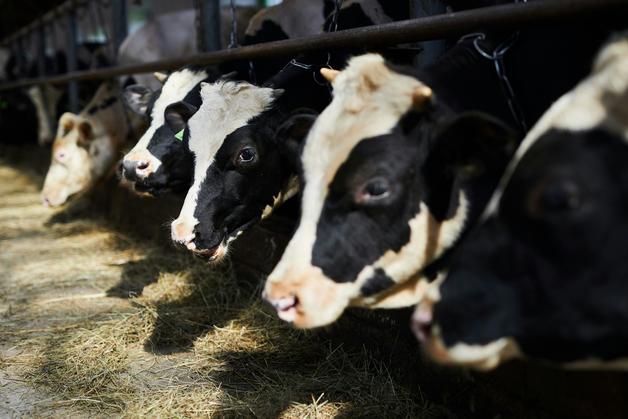Picturing your child’s distress—perhaps a sudden rash creeping across delicate cheeks after feeding or a bout of persistent colic that leaves the whole family sleepless—it’s easy for anxiety to take center stage. Cow’s milk allergy has a stealthy talent for stirring up worry and confusion in even the most seasoned parent. Is it the milk? Is it something else? Should you overhaul the pantry overnight or wait and see? Parents confront not only a riddle of symptoms but also a deluge of information, uncertainty about nourishment, and the daunting prospect of managing every meal. Let’s untangle the threads of Cow’s milk allergy. Here, layered beneath common myths, are clear explanations, real-world solutions, and scientific insights—tools designed to steady your hand and help your child thrive.
What Is Cow’s Milk Allergy, Really?
Not all digestive upsets after milk are created equal. Cow’s milk allergy stands apart from lactose intolerance—a distinction sometimes blurred in hurried pediatric conversations or late-night internet searches. Where lactose intolerance results from the lack of an enzyme (lactase), causing digestive symptoms without involving the immune system, Cow’s milk allergy is orchestrated by an immune response misdirected at milk proteins such as casein and beta-lactoglobulin. The immune system perceives these innocent dietary proteins as intruders, sparking reactions that can range from dramatic (hives, swelling, even trouble breathing) to frustratingly subtle (chronic stomach pain, eczema, persistent fussiness).
Two types demand our attention—IgE-mediated (immediate reactions, appearing within minutes or an hour after ingesting milk, involving IgE antibodies and histamine release) and non-IgE-mediated (delayed symptoms—sometimes hours, sometimes days later—arising from T cells and other immune mediators). Why does this matter? Because rapid hives demand different strategies than delayed-onset gastrointestinal distress. Parents and clinicians must sleuth, tracking not just what lands on the plate, but exactly when symptoms emerge.
Recognizing the Symptoms: A Kaleidoscope of Clues
Immediate Responses: Fast and Dramatic
Imagine your child has just sipped a bottle—within minutes, angry red hives (itchy, raised welts) bloom across the skin. Or perhaps a throaty wheeze disrupts their breathing, prompting urgent concern. Rarely, swelling of the lips or tongue, persistent vomiting, or a drop in blood pressure may herald anaphylaxis, a life-threatening emergency. These are unmistakable, heart-racing moments—reactivity that can make milk protein seem truly menacing.
Delayed Reactions: Subtle Yet Persistent
But not every child plays by the textbook. Hours—or even days—after exposure, some little ones develop chronic diarrhea, mysterious blood-tinged mucus in stools, eczema patches that stubbornly resist creams, or silent reflux resulting in poor weight gain. For some, constipation or abdominal pain may quietly sap comfort and growth. Patterns may only become clear with a symptom diary, capturing what was eaten and precisely when distress followed. Pediatricians rely heavily on these meticulous records to pinpoint Cow’s milk allergy amid a swirl of common childhood ailments.
Age Matters: Infants Versus Older Children
Small babies often present with tummy troubles and skin issues, while older children might suddenly erupt with classic allergy symptoms—hives, swelling, or even asthma-like breathing episodes. It’s a spectrum: mild rashes, moderate colic, severe respiratory distress—all signaling potential Cow’s milk allergy, all worthy of scrutiny.
Why Does Cow’s Milk Allergy Happen? Unpacking the Causes and Risks
Family history plays its part—if food or respiratory allergies run in your family tree, the groundwork for Cow’s milk allergy may be quietly laid before birth. Some theorize that early and unguided introduction of milk proteins can tip the immune balance toward sensitivity. Still, research underscores: no causal link ties a mother’s diet during pregnancy or breastfeeding to Cow’s milk allergy development. Environmental triggers exist, but the genetic lottery still weighs heavily.
Worth noting—cross-reactivity is common. Milk from goats, sheep, or buffalo isn’t a safe haven for most allergic children, because their milk proteins echo those in cow’s milk. And the plot thickens: eczema, asthma, and other food allergies often cluster, demanding long-term vigilance and regular medical check-ups.
Diagnosing Cow’s Milk Allergy: From Suspicions to Certainty
The journey to diagnosis often begins in the kitchen, with parents who notice something isn’t quite right. Clinicians will usually request a detailed symptom diary and may propose a two-step dance: a supervised elimination diet (removing all cow’s milk proteins) followed by a controlled oral food challenge to see if symptoms return on reintroduction. Additional tools from the allergy toolkit include skin prick tests (introducing tiny amounts of milk protein to the skin), blood tests (measuring specific allergy markers like IgE antibodies), and carefully supervised hospital-based food challenges.
Confusion with lactose intolerance? That’s common—but unlike Cow’s milk allergy, lactose intolerance never causes rashes or breathing problems, just digestive discomfort. It’s this immune involvement—the body mobilizing its defenses against a phantom enemy—that defines the allergy.
Statistics can surprise: about 2–3% of infants grapple with Cow’s milk allergy, but, reassuringly, the majority—close to 90%—will outgrow it by age 6. Regular follow-up is the secret—it allows tailored adjustments to the child’s care, preventing both under-treatment and excessive dietary restriction.
Managing and Treating Cow’s Milk Allergy: What Really Works?
Eliminating Milk Safely
The frontline: strict and thorough elimination of cow’s milk proteins. This means scrutinizing ingredient labels, knowing that milk hides under aliases like whey or lactoglobulin, and being alert to trace exposures. For formula-fed infants, extensively hydrolyzed formula is the first recommendation, breaking down proteins so they’re less likely to prompt a reaction. Should this fail—or in cases of persistent, severe symptoms—a amino acid-based formula provides nutrition with virtually no allergenic risk. Soy-based formulas? They’re considered only after six months of age; prior to that, soy can itself spark reactions.
Medical Interventions
For fleeting or mild symptoms, antihistamines can offer relief. Where risk for severe, rapid reactions exists, an epinephrine auto-injector stands as a literal lifeline, demanding parents (and caregivers) know both when and how to use it. Occasionally, under specialist care, desensitization may be attempted—gradually introducing tiny, increasing amounts of milk protein to train the immune system.
Breastfed babies present a nuanced challenge: if a breastfed infant reacts, the mother may need to avoid all dairy herself, ensuring both receive adequate calcium and vitamin D supplementation. Nutritional oversight from a pediatric dietitian becomes essential—not just for growth, but for long-term bone and metabolic health.
Daily Life with Cow’s Milk Allergy: Stressors, Strategies, and Solutions
Cow’s milk allergy isn’t simply a dietary condition—it reshapes family life, social routines, and sometimes self-confidence (for both child and parent). Reading labels turns into a necessity, as does preparing safe snacks for outings and teaching grandparents or daycare staff which foods lurk on the no-go list.
Birthday parties present quandaries—how to say yes to shared cake without risking a reaction? Careful planning, advance communication, and packing trusted alternatives become part of the family rhythm. At school or daycare, providing written instructions and training staff to recognize and respond to symptoms can make all the difference. Flexibility and preparation transform potential exclusion into safe participation.
The emotional toll is real—worry about accidental exposure and seeing a child feel different can prompt stress. Encouraging your child to play an active role in their own safety and food choices, even from a young age, builds independence and confidence. Connecting with other families grappling with Cow’s milk allergy can turn isolation into empowerment, creating a community of reassurance.
Prognosis: The Long View and Hope for the Future
Statistically robust and medically reassuring: about 90% of children outgrow Cow’s milk allergy before their sixth birthday. Still, progress varies individually—some may develop tolerance to baked milk (as in cakes or breads) first, a phenomenon now leveraged in gradual, supervised reintroduction protocols. Regular follow-up with food challenges, every 6–12 months and always with specialist oversight, helps prevent unnecessary restrictions while maximizing safety.
Children with a history of Cow’s milk allergy should be monitored for asthma, eczema, or other atopic tendencies, which sometimes persist even after milk tolerance is achieved. Navigating this journey alongside a pediatrician or allergist ensures no step—whether progress or setback—goes unnoticed.
Can Cow’s Milk Allergy Be Prevented? The Evidence
Is there a way to sidestep Cow’s milk allergy entirely? Science offers cautious optimism. Exclusive breastfeeding for the first few months provides protective benefits, while timely (and gradual) introduction of milk proteins between 4–6 months as part of complementary feeding may help steer the immune system away from hypersensitivity. Delays beyond six months—once common in allergy prevention advice—are now questioned. Contrary to older myths, avoiding milk or allergenic foods during pregnancy or breastfeeding doesn’t shield your baby from Cow’s milk allergy and may even pose risks of maternal nutrient deficiencies.
Probiotics are under active investigation, with some promising signals in research settings, but their use is not currently recommended as standard prevention or treatment. When breastfeeding is not possible, hypoallergenic formulas (either extensively hydrolyzed or amino acid-based) provide a safe nutritionally complete alternative for allergic infants.
Key Takeaways
- Cow’s milk allergy signals an immune-driven intolerance to cow milk proteins—distinct from the enzyme-based lactose intolerance. Symptoms can appear rapidly (skin reactions, difficulty breathing) or emerge slowly (digestive issues, eczema).
- Diagnostic certainty hinges on symptom diaries, clinical evaluation, allergy testing (skin prick, blood IgE), and supervised elimination/reintroduction diets. Consultation with an experienced healthcare provider is invaluable for accuracy.
- Management rests solidly on elimination of cow’s milk proteins, vigilant nutritional planning, and readiness for emergency intervention (including access to epinephrine in at-risk cases). Calcium and vitamin D supplementation are vital for both children and breastfeeding mothers avoiding dairy.
- Most children—about 90%—acquire natural tolerance to milk by school age, though regular re-assessment through food challenges helps fine-tune dietary recommendations and avoid unnecessary restrictions.
- Safe reintroduction of baked milk or milk-containing foods under specialist supervision can accelerate tolerance for some, but should never be attempted independently.
- Prevention advice is evolving: exclusive breastfeeding and the gradual, timely introduction of milk proteins offer the best available strategies; maternal avoidance diets and routine probiotic use are not currently recommended.
- Emotional and practical support, education, and reliable community resources—including the Heloa app for tailored guidance and free health questionnaires—can turn the challenge of Cow’s milk allergy into a manageable aspect of family life.
In moments of doubt or difficulty, medical professionals stand ready to support—not to judge or overwhelm, but to provide clarity, safety, and assurance as your child grows, overcomes, and flourishes.
Questions Parents Ask
Can cow’s milk allergy cause sleep problems in babies?
Yes, cow’s milk allergy can sometimes lead to sleep disturbances in babies. Digestive discomfort, colic, or eczema associated with the allergy may make it harder for your little one to feel comfortable and settle. Rest assured, if you suspect your child’s sleep issues might be related to cow’s milk, discussing these symptoms with your pediatrician peut aider à trouver des solutions pour soulager votre bébé et améliorer la qualité du sommeil de toute la famille.
What are safe milk alternatives for children with cow’s milk allergy?
There are several safe and nourishing options available if your child cannot have cow’s milk. Hypoallergenic formulas, such as extensively hydrolyzed or amino acid-based formulas, are commonly recommended for infants. For older children, calcium-fortified plant-based drinks (like oat, rice, or certain soy milks) may be appropriate, provided they meet nutritional needs. N’hésitez pas à demander conseil à un professionnel de santé ou à un dietéticien pour choisir la solution la plus adaptée à votre enfant et veiller à sa croissance harmonieuse.
How can I make sure my child gets enough calcium without cow’s milk?
Many parents worry about meeting their child’s calcium needs without dairy. Fortunately, there are plenty of calcium-rich alternatives, such as fortified plant-based drinks, leafy green vegetables, tofu set with calcium, sesame seeds, and certain legumes. Sometimes a supplement may be suggested if dietary intake alone isn’t enough. Rassurez-vous, avec un accompagnement adéquat, il est tout à fait possible d’assurer des apports suffisants en calcium pour soutenir la croissance et la santé osseuse de votre enfant.

Further reading:









